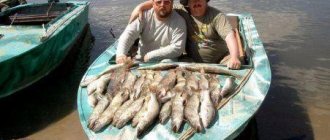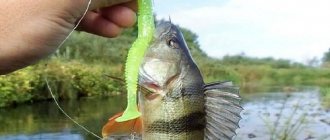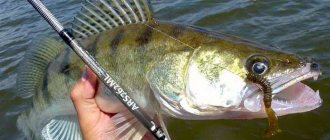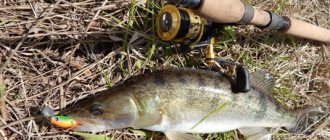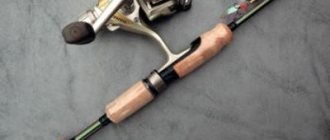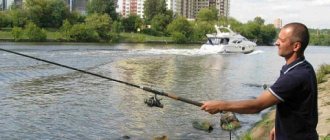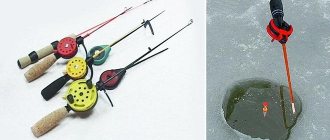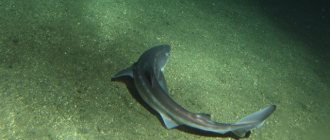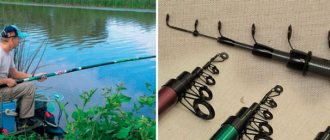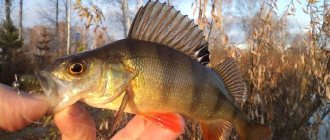What is a jig?
This wiring technique was borrowed from Asian fishermen who used jigs to catch squid. But that was in the recent past and a lot has changed since then, especially the bait. At the moment, all that remains is the wiring technique and its name.
Jig wiring is a torn wiring or wiring in steps. For this fishing technique, the manufacturer produces special jig heads that can be mounted on various silicone baits. In fishing stores you can find twisters, crustaceans, worms, vibrotails, both regular and food-grade rubber.
What is fishing with horse riding?
Fishing with jigitovka (abbreviated as jig) is a method of fishing, which is based on the fact that a fisherman, using a special spinning tackle, plays with bait in the depths of a reservoir, at its very bottom.
Every year, a large number of new baits, lines, reels and rods are invented for this type of fishing. For example, not so long ago luminous baits for jig fishing began to be produced.Perch, pike, pike perch, catfish - this is not a complete list of predatory fish that can be caught with a jig. Most of them hunt at the bottom of the reservoir and ambush potential prey, and jig as a fishing method is perfect for them.
Read here Pike perch on a spinning rod - tips for beginners on how to catch pike perch. Subtleties and features of spinning fishing (125 photos and videos)
However, catching each type of fish has its own nuances and specifics, and catching pike perch on a jig, for example, will be very different from catching the same catfish.
Spinning - selection criteria
It should be immediately noted that jig heads have their own weight, which can vary from units to tens of grams. Therefore, special requirements are imposed on spinning rods that are incomprehensible to beginning spinners. Spinning is chosen based on 3 main criteria - length, test and sensitivity. With the right choice, the spinner will always feel the bait and react to the bite in time.
Length
The length of the rod is selected depending on the fishing conditions: when fishing from the shore, which does not have serious thickets, a rod up to 3 meters long is suitable. When fishing in places where there are thickets, you won’t catch much with a long rod and it is better to use a shorter rod, for example, 2.4 m long. When fishing from a boat, you can use the shortest rods, and they will be the most effective.
Test
A very important indicator, but for a beginning spinning angler, when he has not yet learned how to cast the tackle correctly, far and accurately, a rod with a weight of up to 45g is suitable. After mastering the jig technique, you can purchase another rod, with a test weight of up to 15g, for using small jig baits.
Sensitivity
The spinning rod must be sensitive, otherwise it will not be possible to react to a bite in time. The components of the sensitivity of a spinning rod are: the structure of the rod and how much the test corresponds to the weight of the jig bait used. If you use small jig baits on rods with a large dough, then you can hardly talk about the sensitivity of such gear, since you won’t even feel the presence of bait on the gear.
Which spinning rod to choose for jig?
The first thing about a jig spinning rod is its structure. The action of this rod is super fast - Extra Fast. Thanks to this characteristic, the spinning rod gains greater sensitivity and responsiveness when fishing;
Secondly, the jig rod has a sensitive tip, which shows even light bites, and this is the most important thing in such fishing;
The third feature of a spinning rod for jig is its length. In jigs, as a rule, sticks with a length of 2.40 - 3 meters are used. What does length give us? The answer is obvious, of course abandonment. With a long stick, the cast will be long and, most importantly, accurate;
The fourth feature is its great power in the butt part. The butt of such sticks is powerful, and it bends only under extreme loads from fish such as catfish, for example.
As for the price range, the answer is not clear. You can buy a completely budget model, but it will not have the same characteristics as an expensive spinning rod. It makes sense to buy a good jig stick right away.
Spinning rods. Selection, operation, repair. Issue No. 15 (video)
Coil selection
For a beginner, any reel is suitable, but not the simplest and most expensive one. The reel must work well, ensuring the smooth running of the bait, which means that it must have at least 3 bearings. In addition, it must have the following characteristics:
- Durable.
- The presence of a friction brake.
- All elements must be of high quality.
In this case, we are talking about a widespread spinning reel, which is used by almost all spinning players, not to mention beginners. Of course, it is possible to use Soviet inertial ones (and not only Soviet ones), but they are more problematic in this regard.
If we talk about a baitcasting reel, then this is more of an element for professionals and athletes, and catching a huge fish in our time is more of a fantasy than a reality.
Line selection
It should be noted that there are several types of fishing line available for sale. This is the classic widespread monofilament line, the more modern braided line, and fluorocarbon, which is not noticeable to fish in the water. It is very often used for mounting leashes. At the same time, each fishing line has its own advantages and disadvantages. Many spinning anglers prefer cheaper monofilament fishing line. When fishing at short distances, it justifies itself.
When fishing at medium and long distances, it is better to use braided fishing line, as it is more durable with the same thickness. This means that you can take a fishing line with a smaller diameter, which will allow you to cast the bait further.
In addition, it has a low specific stretch, which allows you to effectively transfer bites to the tip of the rod when fishing over long distances.
Jig fishing for pike perch. Popular postings
Fishing for pike perch with a jig is very well developed in Russia; this particular tackle has become a classic when fishing at great depths using all kinds of silicone baits.
Pike perch stays away from the shore on spits, holes or cliffs, and you can get it from there only with the help of jig tackle.
The jig flies very far and, most importantly, accurately, thanks to the round head, which overcomes air currents at a very good speed, and if you invest well, the bait will completely disappear beyond the horizon.
Pike perch is not a particularly lively fish, so you don’t need much power in the butt part; for fishing you will need a light-class spinning rod with a super fast action.
Among the leading manufacturers, you can easily find specialized pike perch tools that work well on this fish.
The animation of a twister or vibrotail can also be different. The classic step is already fading into the background; the pike perch has begun to prefer dragging along the bottom and easy lifts from the bottom.
Sometimes the pike perch stands in the water column and it makes sense to play with bait in the middle horizon. Most often, a pike perch attack occurs on the fall, sometimes when it breaks away from the bottom.
The color of the bait and the size of the head depend on the fishing conditions and lighting. At a time when lighting is poor, bright colors come to the rescue, and acid will be especially productive.
When there is a headwind, it is best to use large jig heads, and when the wind is blowing at your back, you can use light heads.
When the sun shines so much that it blinds the eyes, pike perch reacts poorly to acidic baits; muted shades are best during this period, and white is best.
Jig fishing for pike perch is best done in the fall, at which point it experiences its pre-winter rush, so don’t miss this time.
Night fishing for pike perch with a jig in the fall. Issue No. 18 (video)
Bait selection
The following baits are used for jigging:
- Silicone;
- Foam;
- Oscillating spinners.
Silicone baits
There are other types of baits, for example, wobblers, spinners, but they are not used in jig wiring due to the specific instructions. Rotating spoons work well with even wiring, and wobblers are mostly used depending on specific fishing conditions.
When jig fishing, silicone baits are widely used. The variety of such baits is so great that it’s hard to even imagine. Due to the fact that the construction material has unique characteristics, copies of various insects, animals and fish themselves are made from it. At the same time, there is a large size range, as well as a wide variety of colors.
The choice of bait comes down to the proportion between the fish and the bait itself. To catch pike, you can take a larger bait (7-10 cm long), and for catching perch, a silicone bait measuring 3-5 cm is suitable. As a rule, spinning anglers have several baits of different colors and sizes. The fish is unpredictable and you have to experiment by placing different baits on the spinning rod.
Baits can be attached to tackle in different ways:
- Texas rig. Allows you to catch predators in snags or thickets of aquatic vegetation.
- Caroline. Allows free movement of the bait.
- Moscow. A retractable leash is used.
- Drop shop equipment is a modern equipment for spot fishing.
Oscillators, turntables and foam rubber
For jigging, such baits are not in demand due to their design features. Although, it is quite possible if you use foam fish for jig fishing. They can, to some extent, be compared with silicone ones if the appropriate installation is carried out. Foam rubber baits are mounted both on regular hooks and on doubles, tees or offsets. Lures with offset hooks have excellent qualities. This design allows you to fish snags, as well as places overgrown with aquatic vegetation. When using offsets, you can make baits that are not hooked.
Selection of jig heads
When choosing jig heads you should pay attention to the following points:
- jig head weight;
- shape;
- bait weight.
Jig heads have their own weight, which ranges from 1g to tens of grams.
Small jig heads, weighing from 1g to 4g, are designed for using ultralight baits up to 5cm in size. As a rule, such a tandem catches small perch and other small fish well. To cast such a small bait, you should use a thin fishing line (up to 0.1mm) and an appropriate rod (with a weight of up to 10g). Otherwise, it will be difficult to feel the bait, which will not allow you to play it correctly.
The most popular jig heads weigh from 5 to 20 grams, therefore, a novice spinning fisher should focus on jig heads that are well suited for fishing both in currents and in still water.
When choosing a head of the appropriate weight, you need to pay attention to how quickly it reaches the bottom. If it reaches the bottom in less than 7 seconds, then it is not suitable and you need to take a jig head with a lighter weight. A predator can attack at the moment when the bait smoothly sinks to the bottom or rises sharply from the bottom. To catch fish such as pike perch, baits with a large weight are chosen, since this fish leads a bottom-dwelling lifestyle.
Head shape
Jig heads, depending on their shape, can be divided into 3 types:
- Ball-shaped.
- Iron.
- Rugby.
The most common is the spherical shape, which is used by almost all spinning anglers. The only drawback of this form is that it falls to one side when reaching the bottom, but it can always be purchased at the store.
The iron-on shape and rugby shape are free of such problems, but they are difficult to find in the retail chain due to low demand.
As practice shows, the shape of the sinker has little effect on fishing performance. Here, special attention should be paid to the wiring technique, and you can master this technique perfectly if you have the appropriate fishing rod.
Equipment options
Knowing what a jig is and the basic rules of fishing, you need to choose the appropriate equipment. It is divided into conventional categories - rod, line and reel, bait and hooks. Jig equipment should be variable - experienced fishermen plan in advance the joint use of certain components. The determining conditions for choice are the type of fishing, the planned type of fish to be caught, weather conditions and time of year.
How to make a fishing box for winter fishing with your own hands: selection of materials and manufacturing procedure
Rod
To fish with a jig you need a sensitive rod that responds well to bites. If the bottom of the reservoir is rocky, you will be able to feel the sound of the sinker hitting it as it lowers. Only the tip of the rod can be sensitive. Such models are called end models.
How to choose a spinning rod for jigging based on the conditions described above? It is recommended to follow these tips:
- The length varies from 2.3 to 3 m. For coastal fishing, you can take longer models; if you plan to fish from a boat, you need to stick to short spinning rods.
- Build. In addition to the soft action described above, there are telescopic models at the end of the rod with the ability to bend along the entire length. With their help you can make long casts, but information content is important for jig fishing. End-type jig spinning rods are sensitive to bites and changes in bait behavior.
- Rod test. Stop at light or medium class. Jig weight varies from 12 to 38 grams. Depending on this, a spinning rod with the corresponding test indicator is selected.
The material used to make a spinning rod depends on its length. Long models are made of composite materials or carbon fiber. It is recommended to choose cheaper fiberglass only for short runs when fishing from a boat. This is due to the fact that fishing with a jig with a significant mass of spinning rod and long casts will be inconvenient.
Line and reel
The choice of reel affects your fishing style. For casting, inertial ones with a multiplier are used. The traditional jig-spinning model is equipped with spinning reels. It is important to choose the right weight of the bait. If it is less than 15 grams, a spinning reel is installed.
Equipment for jig fishing must meet the following parameters:
- Standard size. It is recommended to start from the Shimano classification. According to it, the sizes of the coils vary from 1000 to 6000 in increments of 500. Models with a large indicator have high weight and strength.
- The capacity of the fishing line is at least 150 m. If you plan to jig on braided wire, a hard metal coating is applied to the working surface of the reel.
- Gear ratio – 5 to 1.
Current fishing rules: catch standards, gear requirements and penalties for non-compliance
Instead of traditional mono thread, you need to use a cord. The cross section depends on the size of the expected catch and varies from 0.1 to 0.4 mm. Important - a thick cord can float while fishing if there are gusts of wind. The solution is to make the jig rig heavier or choose a different cord diameter.
Hooks and jig heads
The main feature of this fishing is jig baits and specially shaped heads. The hook is connected to the head in a detachable or permanent way. An alternative option is to use a sinker with special ears - “Cheburashka”. It is attached to the gear through two winding rings.
There are the following types of jig heads:
- Weight varies from 1 to 50 grams.
- The material used is tungsten or lead. Lead models are more popular, as it is an affordable material. You can make them yourself.
- Form. In addition to the traditional ball or ski, there are specific shapes - spoon, banana, rugby.
How to choose a specific model by weight and shape? The depth of the casting site and the speed of the current are taken into account. The weight of the fish doesn't matter. You need to select the weight based on the characteristics of the spinning rod - check the feedback for a bite or lowering the bait to the bottom.
Hooks can be single, double, triple or offset. The latter are used for fishing in places with snags and dense thickets. Their shape minimizes the likelihood of the tip getting caught on foreign objects. However, the likelihood of a successful bite is also reduced.
Lures
To select a specific type of jig bait, you need to take into account the behavior of the fish. Based on the type of fishing, they are divided into active and passive. The first include vibrotails and twisters. Passive type jig baits – mollusks, lizards, crustaceans, frogs. Most often, the choice is made on active models. They are more suitable for catching predatory fish.
Basic selection criteria:
- Catching pike with a jig with a bait 6 to 10 cm long. This is enough for the fish to swallow the prey. For perch, it is recommended to take shorter models - up to 6 cm. They can also be used for preliminary fishing of a specific territory. To catch trophy specimens, you need large jig baits.
- Color. The choice of a specific shade does not matter. It is important that there is contrast between the two colors. If you plan to fish in poor lighting, you need to choose baits with bright and light shades.
- A standard fishing kit should include baits of different weights.
Feeder rig for beginners - catching bream in fast currents
You also need to master the correct installation of jig baits. For reservoirs with a small amount of grass and a clean bottom, you can install open hooks. If the likelihood of a snag is high, it is recommended to take offset hooks. They fit standard artificial bait models.
The video describes the basics of jig fishing:
Jig fishing technique for beginners
Jig involves a stepped wiring technique, therefore, especially for beginners, it makes sense to dwell in more detail on the step. The entire wiring technique includes several stages:
- Casting tackle.
- Waiting until the bait sinks to the bottom. This moment is recorded by the sagging of the fishing line.
- Install the spinning rod at an angle of 45 degrees and make 3-5 turns of the reel.
- There is a pause until the bait sinks to the bottom again.
An angle of 45 degrees is necessary for effective hooking. While retrieving, you can make short movements with the rod, helping the bait play. As a rule, bites occur during pauses when the bait slowly sinks to the bottom. At this moment, you need to keep an eye on the tip of the rod, to which the moment of biting will be transmitted. As soon as a bite occurs, you should immediately hook it. The hook should be sharp and short, without large amplitude movements. And then it’s a matter of technology. For a beginning spinning player, this can be a difficult task, especially under difficult fishing conditions (uneven shore, thickets, etc.). Therefore, it is recommended to have a landing net with you, which will simplify the process of landing fish.
